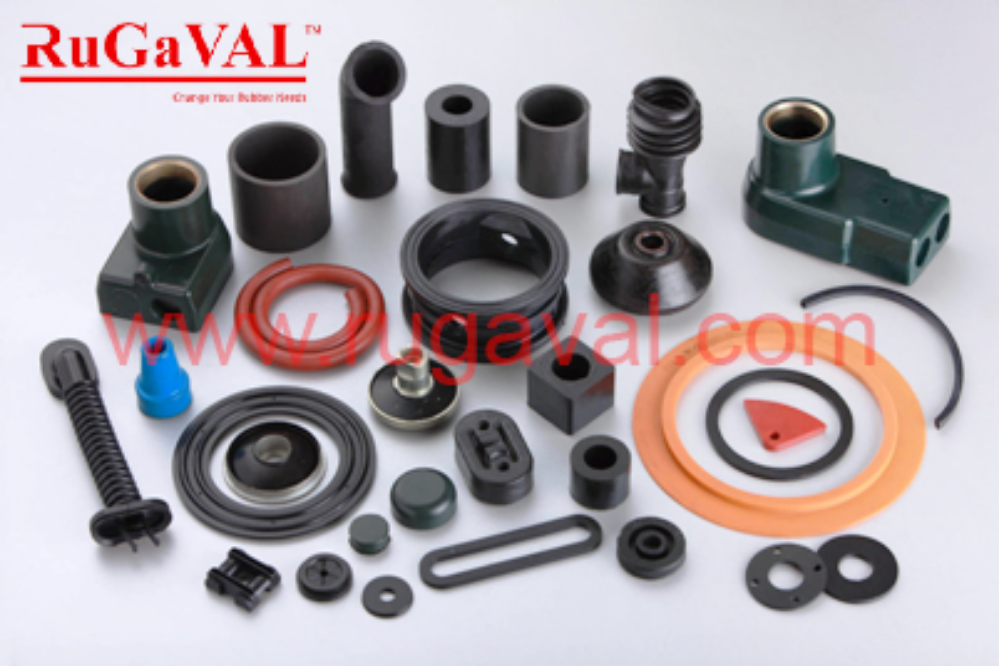Silicone Rubber Moulded Part Application | Silicone Rubber Product

Liquid Silicone Rubber injection molding has thousands of applications across a variety of industries, including medical, automotive, infant care, general industrial markets, aerospace, electronics, and many other specialized industries. While liquid silicone rubber injection molding works best for short- and long-run part production, customers can employ the process in the final stages of prototyping. The process is also suitable for the evaluation of different material configurations before green-lighting a project for full production.
Silicone Rubber Moulding
Liquid Silicone Rubber (LSR) has existed since the late 1970s and has become the material of choice for manufacturing rubber parts and products. The distinctive qualities of liquid silicone rubber injection molding make it different from molding conventional high consistency silicone and other thermoplastic injection molding processes.
Liquid Silicone Rubber injection molding has thousands of applications across a variety of industries, including medical, automotive, infant care, general industrial markets, aerospace, electronics, and many other specialized industries. While liquid silicone rubber injection molding works best for short- and long-run part production, customers can employ the process in the final stages of prototyping. The process is also suitable for the evaluation of different material configurations before green-lighting a project for full production.
As one of the global premier injection molding companies, SIMTEC works exclusively with liquid silicone rubber injection molding. We have produced billions of liquid silicone rubber parts for Fortune 100 and other leading businesses worldwide. We have the manufacturing expertise to provide services that range from prototyping to serial production of high-precision components.
RUGAVAL Rubber ability to provide fast, high-quality service has led to a global reputation for commitment to customer satisfaction and our team of liquid silicone rubber injection molding experts can assist you through the entire process. Contact RUGAVAL representative today and learn how we can help you with your liquid silicone rubber injection molding needs.
CHARACTERISTICS OF LSR
For nearly 40 years, many companies in the major industries have chosen liquid silicone rubber to manufacture their rubber parts because of the manufacturability of the raw material. The injection molding of liquid silicone rubber provides businesses ease of processing, high-volume molding, consistent part quality and improved productivity. Liquid silicone rubber has become the ideal material for very demanding applications because of its unique properties, which include:
- Biocompatibility: Under extensive testing, liquid silicone rubber has demonstrated superior compatibility with human tissue and body fluids. In comparison to other elastomers, liquid silicone rubber is resistant to bacteria growth and will not stain or corrode other materials. LSR is also tasteless and odorless and can be formulated to comply with stringent FDA requirements. The material can be sterilized via a variety of methods, including steam autoclaving, ethylene oxide (ETO), gamma, e-beam and numerous other techniques.
- Durable: Liquid Silicone Rubber parts can withstand extreme temperatures, which makes them an ideal choice for components under the hood of cars and in close proximity to engines. Parts fabricated via liquid silicone rubber injection molding are fire retardant and will not melt— a serious problem for components created through plastic injection molding methods.
- Chemical resistance: Liquid Silicone Rubber resists water, oxidation and some chemical solutions such as acids and alkali.
- Temperature resistance: Compared to other elastomers, molded silicone can withstand a wide range of high/low-temperature extremes. For example, Silastic LSR by Dow Corning for continuous use can remain stable through temperatures ranging from –60°C to +180°C.
- Mechanical properties: Liquid Silicone Rubber has good elongation, high tear and tensile strength, excellent flexibility and a hardness range of 5 to 80 Shore A.
- Electrical properties: Liquid Silicone Rubber has excellent insulating properties, which offer an appealing option for a host of electrical applications. Compared to conventional insulating material, silicone can perform in far higher and lower temperatures.
- Transparency and pigmentation: Liquid Silicone Rubber possesses a natural transparency, this attribute makes it possible to produce, colorful, custom, molded products.
PART DESIGN AND MATERIALS
By adhering to the fundamental design rules for Liquid Silicone Rubber parts, which are similar to injection molding, manufacturers can produce a component that will be stronger and easier to fabricate and assemble. The injection molding of liquid silicone rubber involves a complex task that consists of numerous functional and structural factors the designer must address, including:
- The intended use of the part.
- How the part fits in an assembly.
- The loads the part will experience in use.
The form that the features of the component must take depends on how the LSR material enters, fills and cools within the mold to create the part. Planning for the appropriate tolerances and incorporating additional features in the design can minimize stress and reduce flash. The ability of LSR to fill thin wall sections with minimal challenges and accommodate variations in wall sections makes the issue of sink virtually non-existent.
Similar to thermoplastics, liquid silicone rubber comes in a variety of types and grades. Depending on the application, customers can choose from a material with a rubbery or slippery feel and from a range of hardness.
General purpose Liquid Silicone Rubber does not have a high amount of silica, which makes it appropriate for the fabrication of parts that require only the minimal physical properties. Mixing additives and other fillers can make LSR suitable for applications that need to endure higher temperatures or fluid atmospheres. The invention of self-adhesive LSR provides the material required for over-molding applications.
